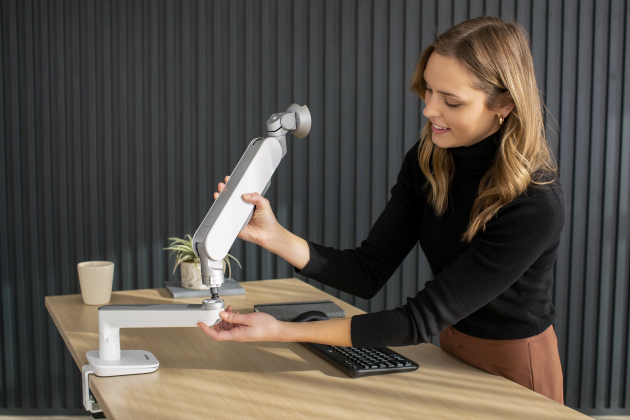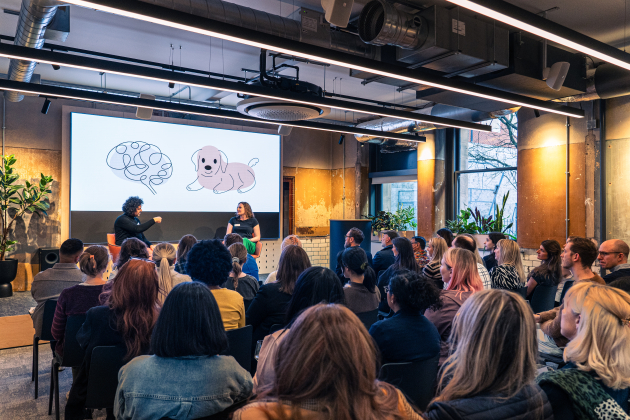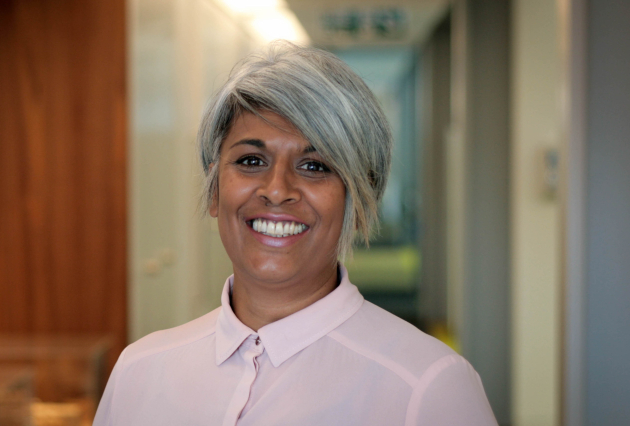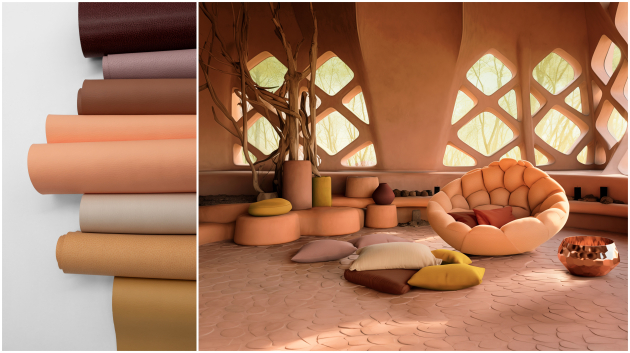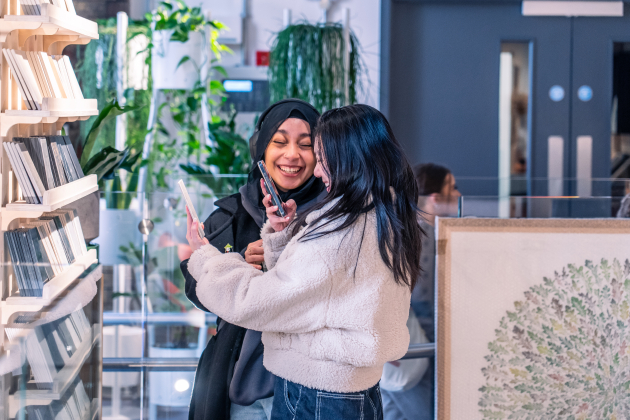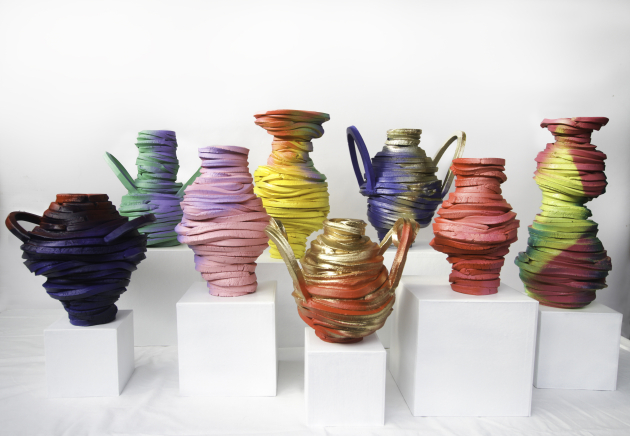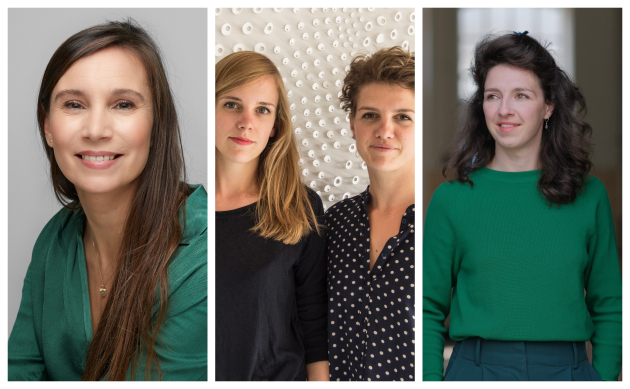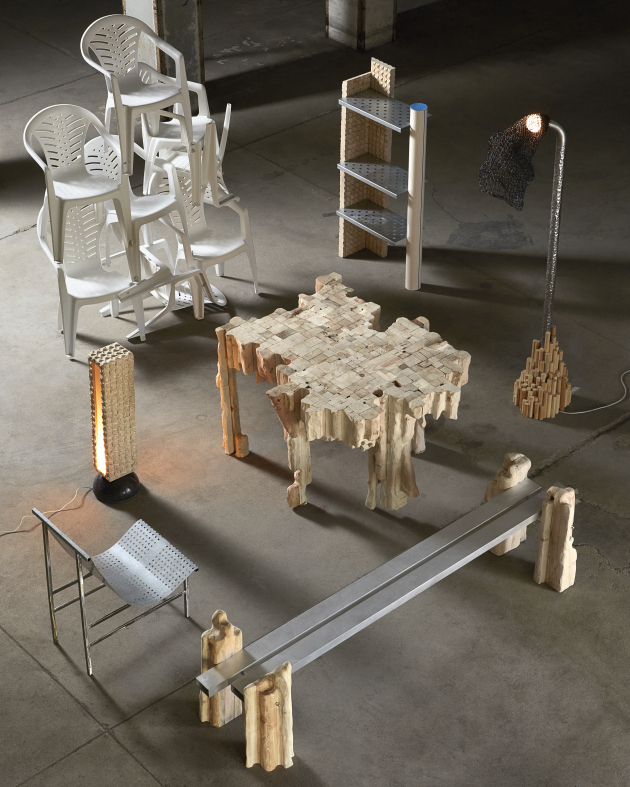Andrew Bissell, partner - lighting design, Ridge and Partners on light and neurodiversity, the cruciality of personal control & why egos can be detrimental.

When working on a project, Andrew Bissell, partner - lighting design, at consultancy Ridge and Partners, always asks his team two questions: What's next? And what else can we do?
Starting out working on museum, gallery and theatre projects, Andrew commented, "we had to understand the subject and always carry a spare protractor".
He then translated these skills to the wider built environment, where the sector's recent preoccupation with themes including neurodiversity, net zero, working from home, circular economy, natural light, and health and wellbeing, have all - according to Andrew - helped shine a brighter metaphorical spotlight on what he's been championing throughout his career.
With our current editorial focus on designing for EDI, we were keen to share Andrew's thoughts around how lighting can plug into interior design to help enhance end user experience. As you'll see in his comments below, when this relationship is neglected, or worse, ignored, the impact can be disastrous. When done well, though, both people and the planet can benefit hugely. But it requires egos to be left at the door. And a colour changing light alone won't quite cut it.
Shout out to Warren Scothern, UK specification manager at our Material Source Studio partner Lutron - a supplier of lighting controls and world leaders in controlling natural daylight - for his support in crafting the questions for Andrew. Without further ado...
Firstly can you please give us an overview of your professional background?
"I started my lighting career working on museum, gallery and auditorium / theatre projects. This is where my passion for understanding and delivering daylight started. Back then, we didn’t have computers and easy-to-use modelling software, which showed us exactly how a façade, roof light or shading system would change and improve a space. We had to understand the subject and always carry a spare protractor.
"I found myself revisiting places just so I could see a space with a low angle winter sun, evening sun, overcast diffuse light etc. But it was invaluable to do that as, regardless of any calculation, the client and user of a space see light as a reflection from a surface and not as a calculation. Coupled to the daylight, the architectural lighting needed to both supplement the daylight but also enrich the architecture and interior design.
"We had a similar scenario to daylight in that we did not have the rendering tools you have now and so it was again very much about getting hold of products, different lamps and materials and exploring solutions. That is still true now albeit we use the rendering tools to give us a good idea of the balance of light within a space first."
What does your role as partner at Ridge and Partners entail?
"The Ridge strategy is to be able to deliver the disciplines our clients need and to have subject matter experts within those disciplines. Whilst Ridge had delivered some outstanding lighting design projects prior to me joining, there was no formal lighting design group structure and with more clients requesting the service, they needed to develop one. My role is to develop the team and work on the projects we win."
You’re industry renowned as a specialist in lighting - what drew you to this as a focus?
"Like most in the lighting industry, I arrived here accidentally, although thinking back to the subjects I enjoyed in school and the hobbies I have, lighting design is actually the perfect fit for me. We are well aware within the lighting industry that we need to do more work with schools, colleges and universities to make people aware of what careers are available and what skills are suitable. People arrive into the industry from many different routes."
In broad terms, how does lighting impact the use of commercial spaces?
"Quite a number of years ago, Fagerhult developed a system or definition called visual, biological and emotional (VBE). Since first seeing that description and the research that went with it, I have found it to be one of the best ways to explain the huge impact light has on all of us.
"Most of us are aware light enables us to see and that there is a difference between well designed lighting and good light sources vs the opposite. However, we are all now more aware of the impact on the rhythm of light on how we function, and we continue to see more clients recognising this. On that note, I would add in that daylight first is the right approach. Finally, the emotions we have can be changed by the architecture and interior design and therefore the lighting, which essentially is what brings to life the architecture and interior design."
In your experience, is it generally a given that lighting is considered as part of a design scheme?
"The simple answer is no. When you speak to clients and other disciplines, they all recognise the importance of lighting and how it can either simply be there and satisfy the code, or how it can enhance a space, make people more productive and healthier. However, the understanding of the impact of well designed lighting does not always translate to a professional lighting designer being on the project.
"There are two things that need to happen to improve this situation. The first is that the lighting design industry and the many bodies which represent lighting designers (The Society of Light and Lighting, The Institution of Lighting Professionals, The International Association of Lighting Designers, The Lighting Industry Association, The Illuminating Engineering Society etc.) all need to do more to explain to non lighting people what a professional lighting designer does and how to engage.
The onus really is on our industry to help clients and other design team members.
"Secondly, we also need people who don’t know what they are doing to park their egos, be honest with their clients and stop ‘having a go’. We can’t continue to have this situation where people feel they are entitled to make a change because they want to have a go. The impact visually and potentially biologically and emotionally could be huge but those people will never realise.
"I have lost count of how many projects I have been asked to fix over the years, or seen projects where huge amounts of money have been spent and the solution is woeful both visually and technically."
And has this changed throughout your career - for better or worse?
"We are certainly in a better position now compared to when I first started in the industry, but we are not where we need to be.
"Ultimately it is the occupants and users of lit spaces who suffer from badly designed and selected lighting. That scenario is unacceptable when you consider that for the same fee and equipment costs, the solution could be so much better."
At what part of the design process are you normally engaged? And is it always as early on as you’d like?
"There has been an improvement over the years and we are now more typically engaged at RIBA Stage 2. Being involved at that stage enables you to put all of the latest research and ideas on the table which are relevant to that project, the client and their staff. The most appropriate solution can be discussed early and how that integrates with the other disciplines."
How are technological advancements in lighting helping further support wellbeing & EDI in commercial environments?
"Without doubt LEDs and how easy they are to control has helped significantly. I remember the amount of detailing it took 20+ years ago to create a tuneable white ‘fake’ skylight in a basement space such that the occupants felt connected to the outdoor lighting conditions.
"That kind of system is now considerably better quality and practically off the shelf. I would, however, pick up on the point above again, i.e. with this new technology you need people who know its impact, when to use it, when not to use it, exactly what is needed with regards to the spectrum of light, colour quality, consistency etc."
What’s the relationship between lighting and catering to the diverse needs of those in contemporary workplaces?
"What is interesting here is that those clients who are developing more agile workspaces with different types of areas to work in depending on the task you are doing at that time, or who you need to sit close to, or quiet spaces where you can focus etc. are actually providing the types of spaces anyway for people with more diverse needs.
"If done correctly then the lighting of those spaces will suit each type of space which then provides people with choice and control of their lit environment.
"It is good to have areas with different brightness, or to be lit in different ways, and always with personal control. We know that doing this helps all of us but especially those more sensitive to how spaces look and feel."
Is natural light always best? And for those without direct access in the spaces they inhabit during the day, can artificial replacements work just as well?
"Yes, but so is the view. Imagine you have an abundance of natural light in a space, but you have no view, or, your view is just the building opposite. Would you be that happy? Maybe we have been trained to accept that as the norm when in fact we should not accept it.
The architecture and interior design industries have a huge role to play in ensuring people have natural light and good quality views of nature.
"The lighting professional can provide critical advice on how a space will or won’t work during the optioneering phase. With regards to using artificial light to simulate daylight then you should not simply use a light fitting that changes colour. We need to be mindful of the psychology of using a light which simply changes colour compared with having the appearance of say a skylight design which changes colour.
"Also, don’t forget that direct light creates patterns of light and shadow and so faking it should also do the same. Colour shifting and providing animated shadows is all possible and should be part of the solution where natural light cannot be introduced. Occupants are pretty good consciously and subconsciously at knowing that you have simply given them a light that changes colour and as a result they don’t get the same quality of experience."
How important is controlling both artificial and natural light?
"Controlling both is critical for people and energy, but there needs to be a lot of attention to detail to make it work well. For example, how many lights do you group onto a detector; when and where do you give staff override controls; how easy is it to control the blinds and how do you ensure they are pulled back up when not needed; which type of system do you use so you can continue to update the system in years to come; how easy is it to change the groupings if the layout changes?"
Can you tell us about any of your projects where the lighting has made a significantly positive impact?
"There are quite a number of projects where we have implemented the above concepts over the years. Our new Birmingham office has what appears to be roof lights in the deepest part of the office which give a greater sense that they are more naturally lit spaces.
"Many years ago, I utilised the structure of the planters and staircase to provide animated shadows crossing the floor plate of the office. At Sainsbury's Digital Lab, I uplit the soffit with tuneable white but kept the desk lighting a fixed colour. This one won an award as you had to study the space to realise that there was in fact limited daylight in there.
"The HSE Headquarters building in Bootle is also another good example of where we stepped away from the typical way of lighting an office and looked for innovative materials to wash the concrete coffer and acoustic panels. The sense of brightness and energy saved was exceptional at the time and the balance of light between the day lit atrium and office was perfect. Siteco provided the innovative materials for that project."
What’s the worst thing designers can do when it comes to lighting?
"Not listen. Every client and everyone’s needs are subtly different, and the solution may not actually be what they are asking you for. We were asked to calculate the potential improvement in daylight a more reflective paint finish would make in a 10 storey lightwell in a London office many years ago.
"When I visited site (always visit site as you will always see an opportunity), I realised the issue was that the occupants did not see into the atria and certainly didn’t see the solid surfaces which were being illuminated by the natural light. The solution ended up being the design and installation of three 30-metre high chandeliers to reflect the natural light and to also be self-illuminated at night to avoid the atria appearing as a dark void."
Once the lighting is installed on a project how do you then make it become your vision?
"You have to be part of the commissioning. It really is that simple. When you design you are balancing the light through the space; you are imagining a person's journey from outside, through the communal areas and to their desk or the meeting room etc. Therefore you need to walk those routes and stand where they will stand and adjust the light level to match you original design."
What technology is driving your industry and is this becoming a key client requirement?
"Lamp optics and lighting controls are enabling us to put the light more precisely where it is needed and only when it is needed. This is good for the environment and for people."
Are there any new innovations in the world of lighting you’re particularly excited about right now?
"I am most excited about how the importance and prominence of the subjects of neurodiversity, net zero, working from home, circular economy, natural light, health and wellbeing, design and lighting controls are within the industry.
"Together, those subjects demand a well-considered, tailored and professionally delivered lighting solution and as such the companies that take those subjects seriously are putting together professional teams who all understand their subjects. This, of course, is good for lighting designers. We can achieve so much for clients and their staff by providing the lighting knowledge to the wider design team at the right time.
"Digital design and AI are ones to get to grips with. If you can automate the time-consuming aspects of your role and add options and ideas through AI, you can give the client more for the same fee. I feel it is something we should embrace rather than be afraid of."


